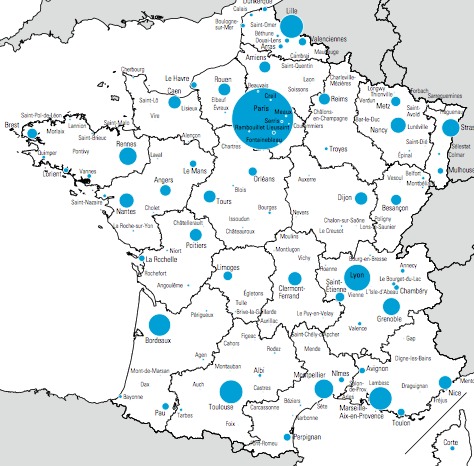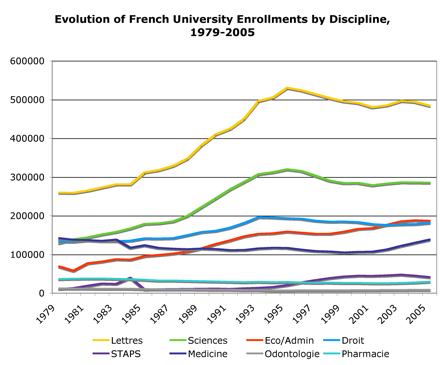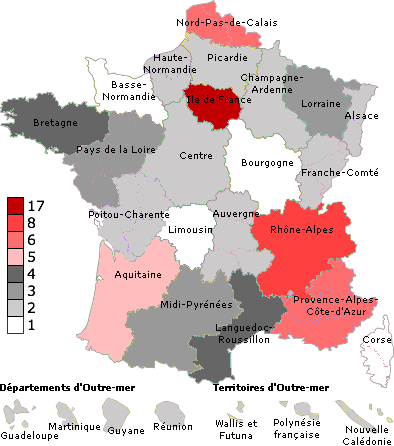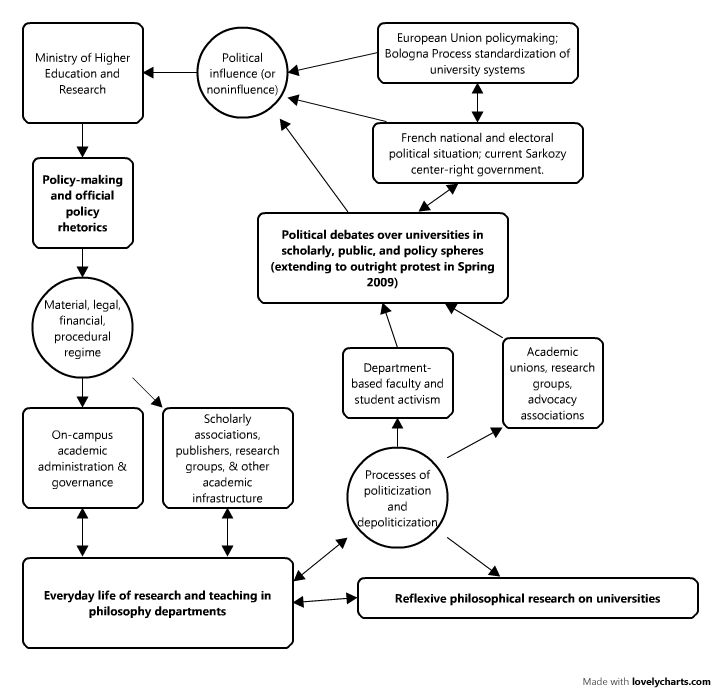As it turns out, there’s no need for me to cobble together my own maps of French higher education. A beautiful official atlas is already made available by the Higher Education Ministry, with far more detail than I would care to track down by myself. Let me reproduce a couple of their figures:

As you can see, Paris is still by far the biggest university town. If we look at the accompanying figures for 2007-8, it turns out that Paris proper has 156,743 university students, with 320,942 total in the Paris region (Ile-de-France). After that, we have Lyon (73,262), Lille (58,788), Toulouse (57,907), Aix/Marseille (56,590), Bordeaux (53,335), Montpellier (43,355), Strasbourg (37,299), Rennes (37,008), Grenoble (32,978), Nancy (28,078), Nantes (26,329), Nice (21,664), and from there on down… As in the last post on centralization, here too, mapping by student population size, we can see that the Parisian region remains by far the largest university site — its 320,942 of 1,225,643 total public university students comes out to 26% of the nation’s university population. (Note that universities only constitute about half–56%–of the French higher ed population, but we’ll talk about the rest of them some other time.)
But our thinking about centralization has to shift when we find out that, over time, provincial universities have grown and thus diminished Paris’s relative standing. In other words, it seems that historically, Paris used to be even more the center of the academic universe than it is now. To better understand this process let’s look at a thumbnail sketch of French university massification by a sociologist I know here, Charles Soulié:
Continue reading “French university towns and decentralization” →




